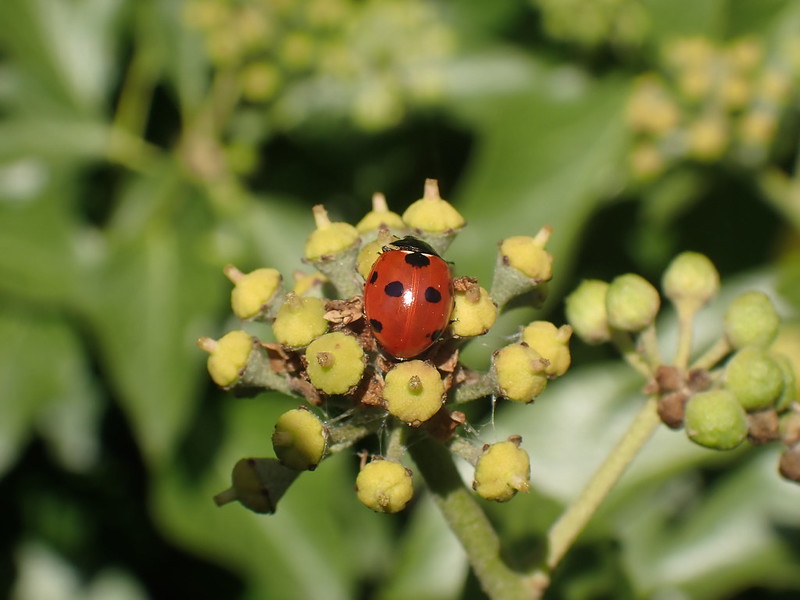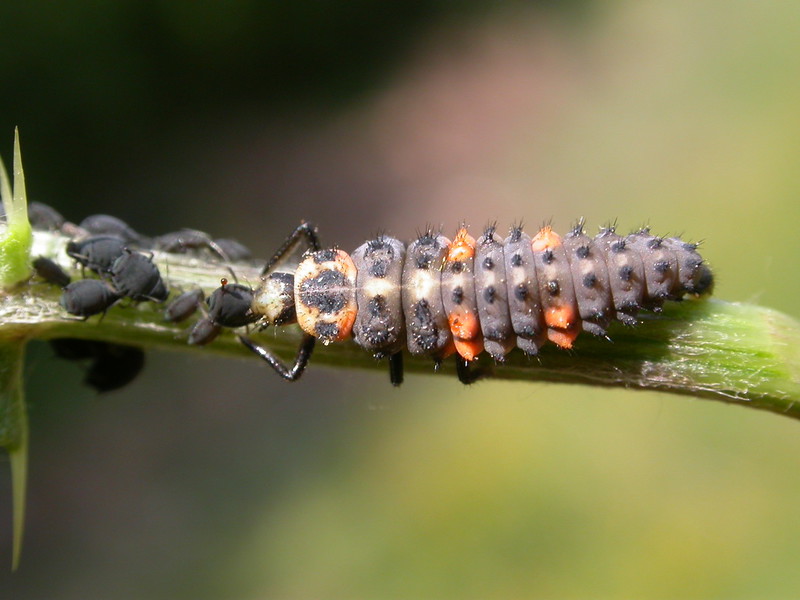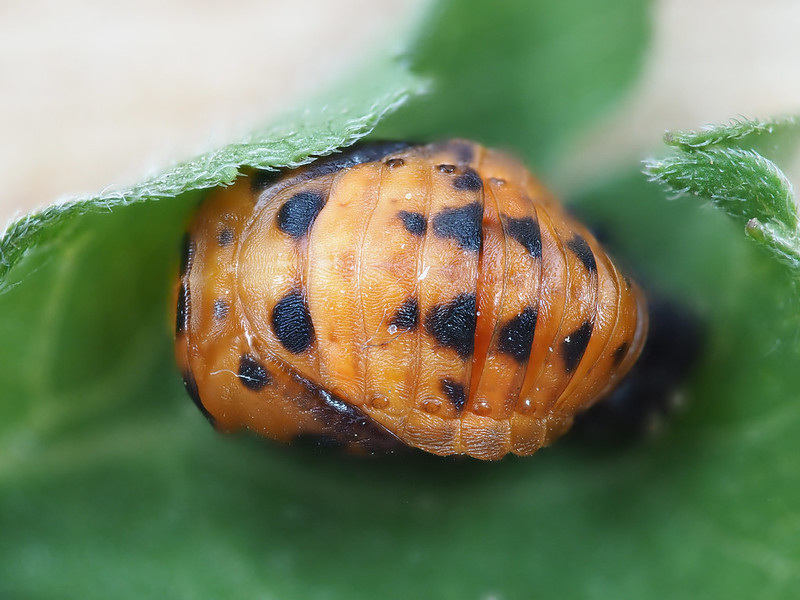The 7-spot Ladybird is the ‘classic’ ladybird with a red body and seven black spots. It can be found in almost any habitat.
Fast facts
- Common name(s)
- 7-spot Ladybird
- Scientific name
- Coccinella septempunctata
- When to see it
- Year round
- Diet
- Aphids and other soft-bodied insects
Description
The 7-spot Ladybird is the ‘classic’ ladybird with a red body and seven black spots. This species can be found in almost any habitat.
Identification
Adults
Adults are red with seven black spots and large at 5 – 8 mm long.
Larvae
Late-stage larvae are dark grey to black with a blueish tinge. There are dark orange spots on the side of the first and forth abdominal segments.
Pupae
Pupae are usually pale orange with two rows of dark triangular markings running down the middle. There are also four small dark spots on the front.
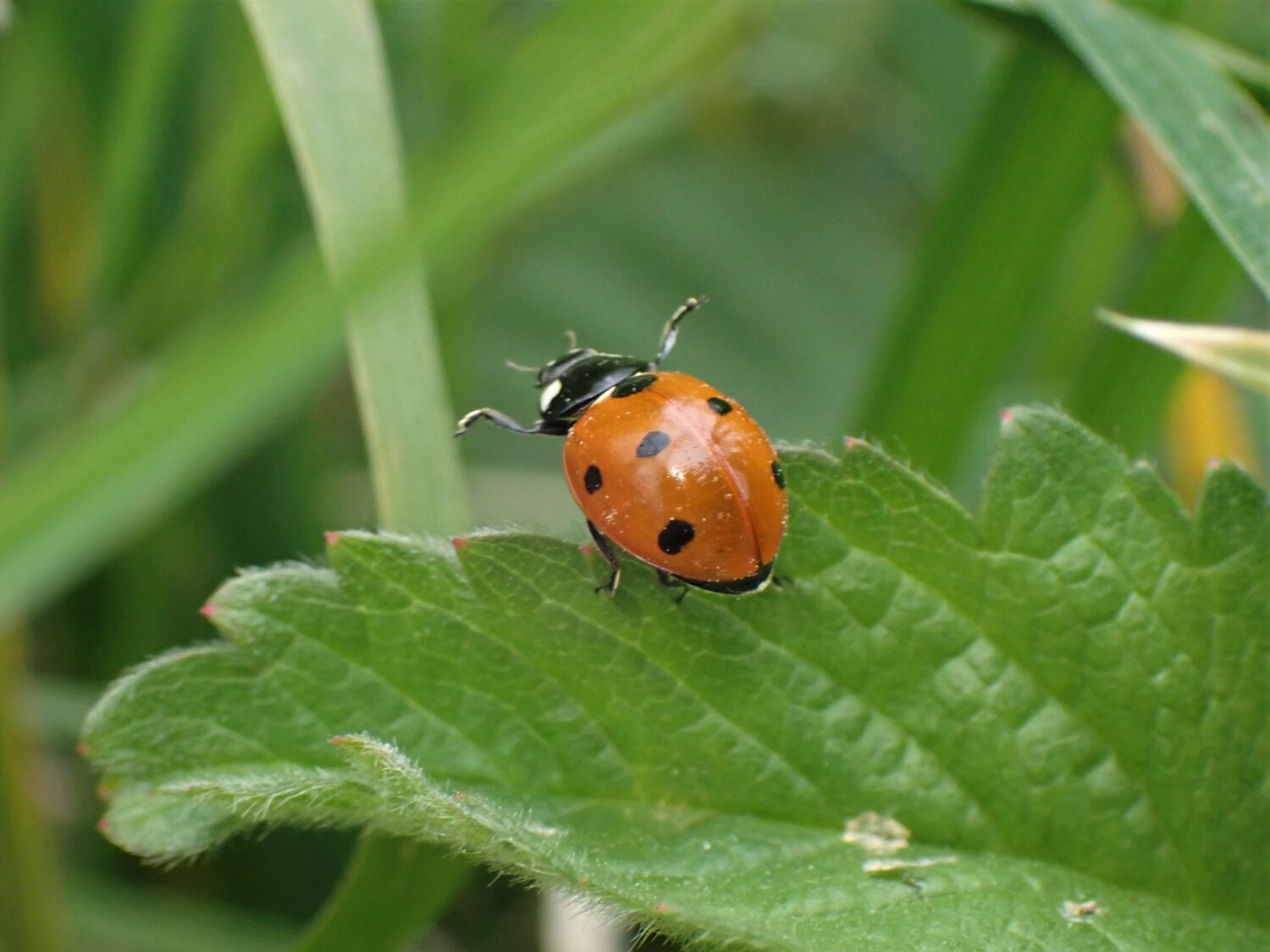
Spotted this ladybird?
Share your sighting of the 7-spot Ladybird and other North East Ladybird Spot target species to contribute to the conservation and study of our region’s bees.
Similar species
The only other similar ladybird is the Scarce 7-spot Ladybird (Coccinella magnifica). This species is rare in the North East and is closely associated with wood ant nests in woodland and heathland. The central black spots of this species are larger than the outer spots. Confident identification can be made by looking at the underside – Scarce 7-spot has four white triangular markings below the legs whereas 7-spot has only two markings.
Ecology
Adults can be found throughout the year. The 7-spot Ladybird is one of the first ladybirds to become active in the spring and can be seen on plants from mid-March onwards. The 7-Spot Ladybird has one generation a year in the UK. The adults overwinter in a range of habitats and may be found in houses and outbuildings, often in groups. Sometimes these groups can be of several ladybird species.
Both adults and larvae eat aphids and other soft-bodied insects. When these become scarce, adults will feed upon pollen and the larvae can become cannibalistic.
The 7-spot Ladybird is a generalist species found in almost any habitat. When food is plentiful and the weather is warm the 7-spot Ladybird can occur in huge numbers.
Did you know?
In the record drought year of 1976, ‘swarms’ of hungry 7-spot Ladybirds drove people off the beaches as they landed and nipped people in their search for food.
Regional Distribution
The 7-spot Ladybird is widespread in the region and has the most records of any ladybird species in the North East. This species is widely distributed across Britain and Ireland.
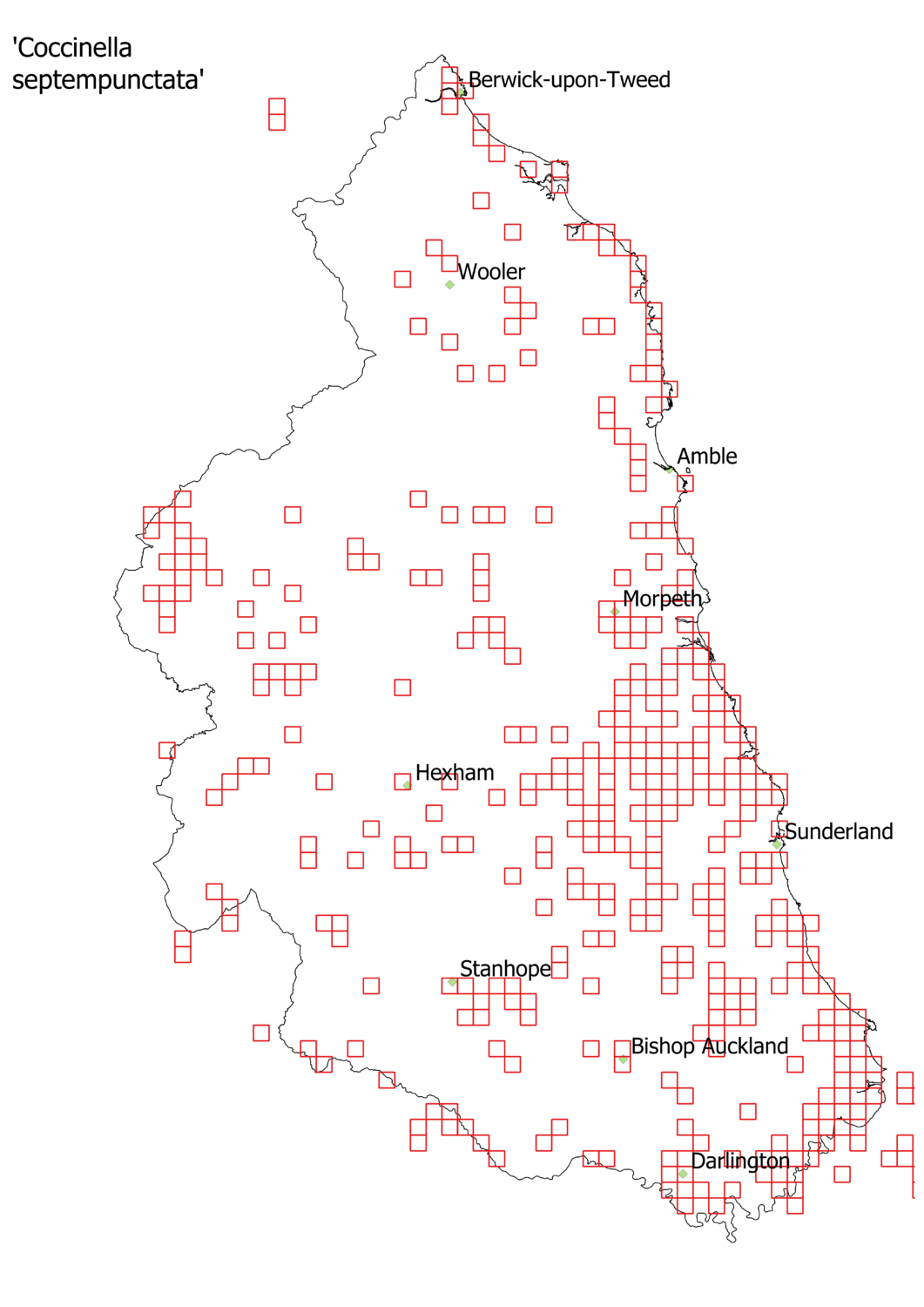
Distribution map of 7-spot Ladybird (ERIC North East data)
